Introduction
The acoustic guitar is not only a beautiful sounding instrument, it’s one of the most versatile in all of music. Consider the variety of genres and styles that utilize an acoustic guitar and you’ll be hard-pressed to find one that doesn’t. It can be sweet and mellow or used to propel the heaviest of rock tunes. From James Taylor to Led Zeppelin. From Jason Mraz and Taylor Swift to Tony Iommi. That covers a lot of ground. Then there’s the entire category of country music, which couldn’t be country music without the acoustic guitar. And don’t get me started on delta blues, bluegrass or klezmer. Whether it’s fingerstyle or strumming, the acoustic guitar oozes expressiveness.
Acoustic guitars come in a variety of sizes and shapes and are constructed of several species of wood. The different iterations give each instrument its distinctive tone and feel, its personality. To help you navigate the various body styles and tonewoods we’ve assembled this handy buyer’s guide.
Value
Guitar prices, either electric or acoustic, vary wildly. You’ll find instruments for under $100 and others costing several thousand. You may ask yourself “is a $100 guitar any good or do I really need to spend four figures to get something playable?” The answer is yes, there are many great playing instruments that are very reasonably priced. But, like anything else, finer materials and better craftsmanship tend to cost more. How much more really depends on how you’ll use the instrument, you’re playing level, and your budget. Where a guitar is made also affects the price with American-made instruments usually costing more than their imported counterparts.
Usage
 How you’ll use the guitar is a determining factor in what kind of instrument you should purchase. Want to play in front of the fire on camping trips or on a blanket in the sand down at the beach? You’ll probably want to explore the range of inexpensive guitars that are made of durable materials. Are you hoping to play with a band or get up and perform a few tunes at an open mic night? If so, you’ll want to be sure to consider instruments that have a built-in pickup, which will allow you to amplify their sound. Have you always wanted to play, have a little more in your budget and probably won’t leave the confines of your living room or home studio? There are plenty of finely crafted instruments that fit that bill.
How you’ll use the guitar is a determining factor in what kind of instrument you should purchase. Want to play in front of the fire on camping trips or on a blanket in the sand down at the beach? You’ll probably want to explore the range of inexpensive guitars that are made of durable materials. Are you hoping to play with a band or get up and perform a few tunes at an open mic night? If so, you’ll want to be sure to consider instruments that have a built-in pickup, which will allow you to amplify their sound. Have you always wanted to play, have a little more in your budget and probably won’t leave the confines of your living room or home studio? There are plenty of finely crafted instruments that fit that bill.
Another thing to consider is what kind of sound you want from the guitar. The many different body styles and wood choices all have different inherent characteristics that produce different tones. A bright, focused sound is great for fingerpicking where very open, ringing tone, can be geared toward strumming. Knowing the style you plan to play can aid you in your decision.
Tonewoods
The species of wood used in crafting your instrument will have a dramatic affect on its overall tone, with different woods producing very different sounds. Like every tree, every piece of wood is different, though there’ll be more similarities than differences. Here’s an overview of what you can expect.
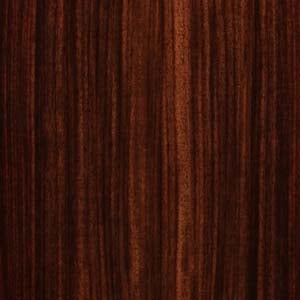 Rosewood (Back and Sides)
Rosewood (Back and Sides)
Known for its strong tonal response across the frequency spectrum and its enhancement of both bottom and top frequencies, rosewood instruments produce remarkable volume with a slow decay, making it very desirable tonewood.
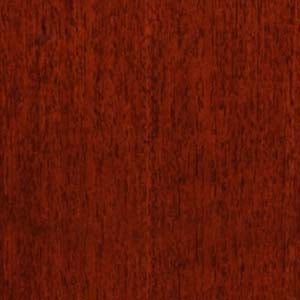 Mahogany (Back and Sides)
Mahogany (Back and Sides)
A rich reddish-brown, dense wood, Mahogany is a cost effective alternative to Rosewood. It offers a warm, woody, mellow tone with a punchy midrange that’s great for fingerstyle playing or a driving rhythm.
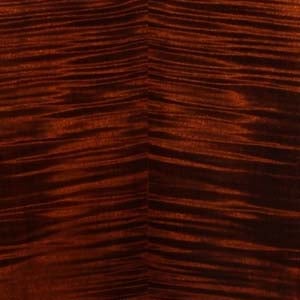 Maple (Back and Sides)
Maple (Back and Sides)
A white, or blonde, hard wood that produces bright, clear tone with pronounced upper-mids with a short decay, making it a favorite among live performers. Though it has little effect on the sound, Maple’s beautiful figuring patterns include Flame (Curly Maple), Bird’s Eye, and Quilted. These luxurious woods tend to run on the pricier side than plain Maple, which will give you essentially the same tone. Maple is often employed in large body guitars to equalize the low-end generated by this body style.
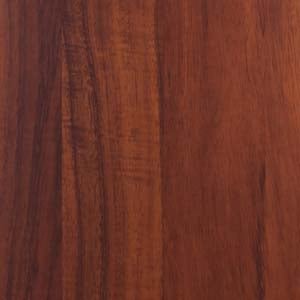 Koa (Back and Sides)
Koa (Back and Sides)
The deeper voiced Hawaiian Koa has long been employed in the construction of ukuleles. Varying greatly from log to log, Koa can generally be described as offering a warm tone with more top-end than Rosewood. Koa tends to be more of a “specialty” wood and is often found in limited editions and manufacturer’s special runs.
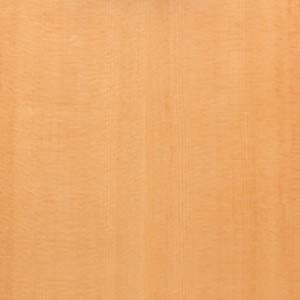 Sitka Spruce (Top)
Sitka Spruce (Top)
This is the industry standard and the most commonly found top on an acoustic guitar. It’s stiff and strong with a robust fundamental tone and understated overtones with a wide dynamic range.
Fingerboards and Bridges
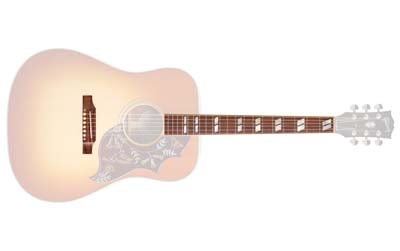 Often made of the same materials, the fingerboard and bridge are usually constructed of either Rosewood or Ebony. The more Reddish-Brown Rosewood will have variations in color and show some grain while the much denser Ebony will be uniform in its darker color and show very little grain. Ebony tends to have a brighter tone while rosewood is a warmer sounding fingerboard and bridge wood.
Often made of the same materials, the fingerboard and bridge are usually constructed of either Rosewood or Ebony. The more Reddish-Brown Rosewood will have variations in color and show some grain while the much denser Ebony will be uniform in its darker color and show very little grain. Ebony tends to have a brighter tone while rosewood is a warmer sounding fingerboard and bridge wood.
Solid or Laminated
Generally, guitars made entirely or partially of laminated woods are less expensive than their solid counterparts, but that doesn’t necessarily mean inferior. It’s more about the craftsmanship involved in building the instrument. Still, solid wood does sound better than a laminate. Take the soundboard, or top, for example. Widely thought to be responsible for 80% of the sound of the instrument, the soundboard will vibrate more if made of a thin, solid, highly resonant piece of wood than if constructed using a laminate. Made of several layers of wood (not always the same wood and sometimes a composite material) held together with glue, a laminate top may end up being more durable, but will weigh more and be less flexible than a solid piece. This results in a dryer tone with less ring.
Because of its importance to the guitar’s overall sound, the top is often the first wood in a manufacturer’s instrument offering to be upgraded to a solid piece. You’ll find instruments with a solid top and laminated back and sides in the mid-price range that are great for the beginner or working professional.
Instruments made of all solid woods will have superior tone due to the solid top producing a fuller, richer sound and the solid back and sides offering more projection.
Body Style
The style and shape of your instrument has a large impact on its tonal personality. It’s also important that you choose a body style that you’re physically comfortable with. Many guitar styles are available in a cutaway version giving you easier access to the higher frets. Here are some of the most popular body sizes.
Small Bodies
See all Small Body Acoustics >
The small-bodied category includes compact ½ and ¾ scale instruments including the Martin Backpacker, Mini, Travel Guitars and Parlor guitars. These instruments provide ultimate portability, extreme comfort for playing in casual situations, and smaller scale for smaller hands. They’re also a lot of fun to play, and that counts for a whole lot.
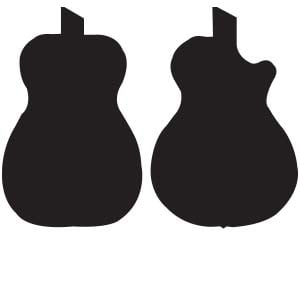 Grand Concert
See all Grand Concert Acoustics >
Grand Concert
See all Grand Concert Acoustics >
The smallest overall size of the major styles, the Grand Concert produces a very focused sound with the least amount of resonance, making it a perfect candidate for a live performance instrument when paired with a pickup.
This guitar shape is very balanced in the tonal spectrum and is preferred by fingerstyle players.
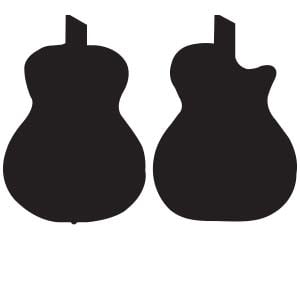 Grand Auditorium
See all Grand Auditorium Acoustics >
Grand Auditorium
See all Grand Auditorium Acoustics >
Similar in design to the Grand Concert, only larger (and sometimes with a convex back), the Grand Auditorium generates more volume with increased bass response. Wider than a Dreadnought at the lower bout but with a thinner waist and forward bout, it’s a favorite with players in both the studio and on the stage and well suited for fingerstyle, rhythm or lead work.
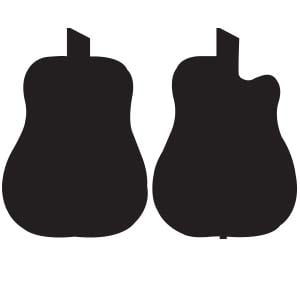 Dreadnought
See all Dreadnought Acoustics >
Dreadnought
See all Dreadnought Acoustics >
Easily the most popular acoustic guitar body style, the Dreadnought is the shape that probably comes to mind when you think of an acoustic guitar. With a larger size and broader waist than most body styles, more volume and extended bass response make this a popular style for almost any kind on music and it’s versatile enough for live performance or the recording studio.
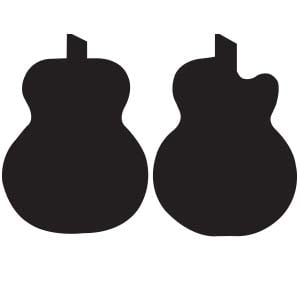 Jumbo
See all Jumbo Acoustics >
Jumbo
See all Jumbo Acoustics >
As its name suggests, the Jumbo is the largest of the standard body styles and produces a big, meaty tone with lots of volume and bottom end. With its less focused sound, this instrument is best suited for heavy strumming, making it popular with rock, country and rock-a-billy players.
Bracing
As previously mentioned, a thin, flexible top will have the greatest resonance producing the most desirable tone. Now weigh that against the 170 lbs. of pressure being applied from strings and you’ll understand the importance of the instrument’s bracing.
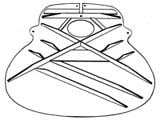 X Braces
X Braces
The large X bracing found on the bottom of the soundboard is the standard brace pattern for steel string acoustics. These two large braces are responsible for keeping the top flat and true. Shaving arches or hollows in the braces is a technique called scalloping. This improves the flexibility of the braces and, more importantly, reduces the inertial mass of the top allowing it to resonate more freely. The result is a louder, bassier, more responsive guitar.
Finish
One of the most expensive processes in building an acoustic guitar is the finish. It is not the cost of the finish, it is the time and labor it takes to finish a guitar. Most standard finishes require drying time between coats and sanding in between coats. There are many different types and methods to finish a guitar. Taylor uses a revolutionary UV finish that greatly cuts down the drying time, while Martin and Gibson use a more traditional finish that requires more sanding and drying time.
Conclusion
There isn’t one acoustic guitar model that does it all and is the best acoustic guitar, but there are models that will best fit your needs and should be the guitar for you. Use this guide as a road map to find the features that best fit your acoustic guitar needs.
About the Author - Michael Barberich
 A New York guitar phenom from a young age, Michael still smiles looking back on playing his first bar gig at the ripe old age of fourteen. By eighteen, his acrobatic guitar style had caught the attention of a popular local band (whose members were all ten years older) and together they quickly conquered the legendary Long Island music scene, playing six nights a week to large audiences. Says Michael of this period, "To fill time, the band would often throw me two solos per song. I did the math recently and realized I was playing about sixty solos a night times six nights a week. That's three hundred and sixty solos per week! That's really where I learned to play, on stage every night in front of lots of people."
A New York guitar phenom from a young age, Michael still smiles looking back on playing his first bar gig at the ripe old age of fourteen. By eighteen, his acrobatic guitar style had caught the attention of a popular local band (whose members were all ten years older) and together they quickly conquered the legendary Long Island music scene, playing six nights a week to large audiences. Says Michael of this period, "To fill time, the band would often throw me two solos per song. I did the math recently and realized I was playing about sixty solos a night times six nights a week. That's three hundred and sixty solos per week! That's really where I learned to play, on stage every night in front of lots of people."
As comfortable playing or producing in the studio as he is on the stage, Michael's varied career has afforded him the opportunity to work with many of his heroes including Steve Vai, Justin Hayward, Gary Brooker, Rod Morgenstein, Steve Howe and Cheap Trick. Always happiest with a guitar in his hand, you can find Michael showing his versatility performing with LI Hall of Fame inductees Barnaby Bye, Macca Nation (a tribute to Paul McCartney & Wings) or his kitschy 70's band, the insanely popular, 45rpm (voted Long Island's best cover band for 2013 and 2014.)